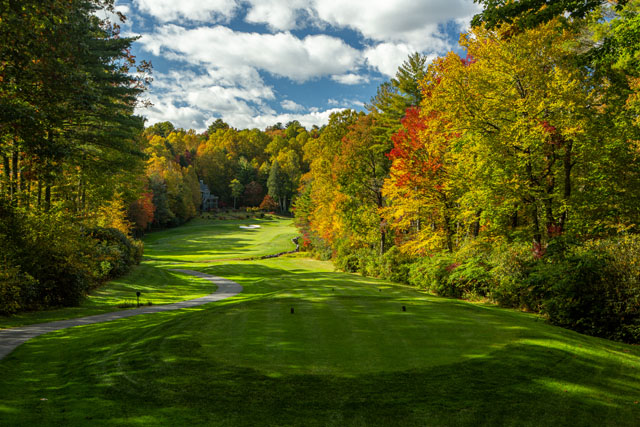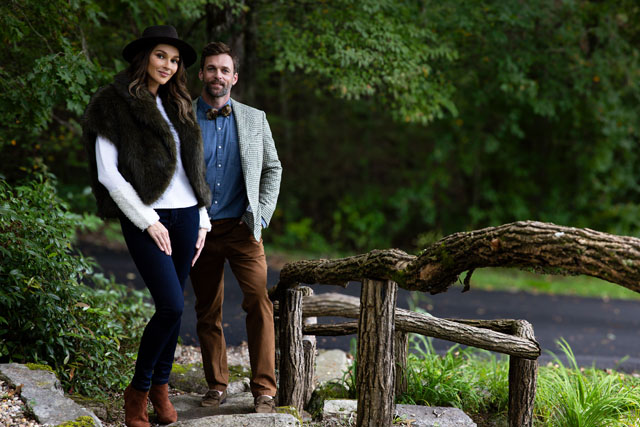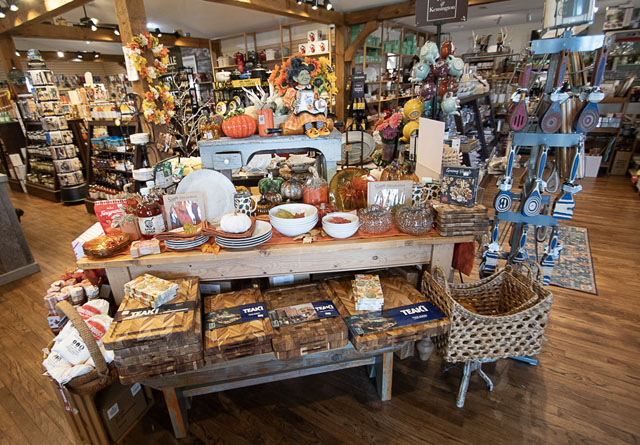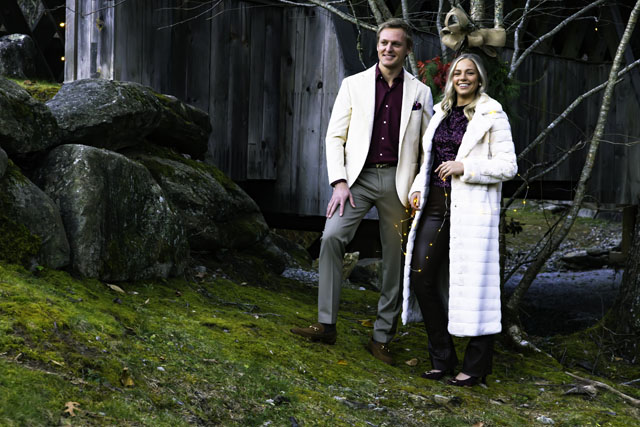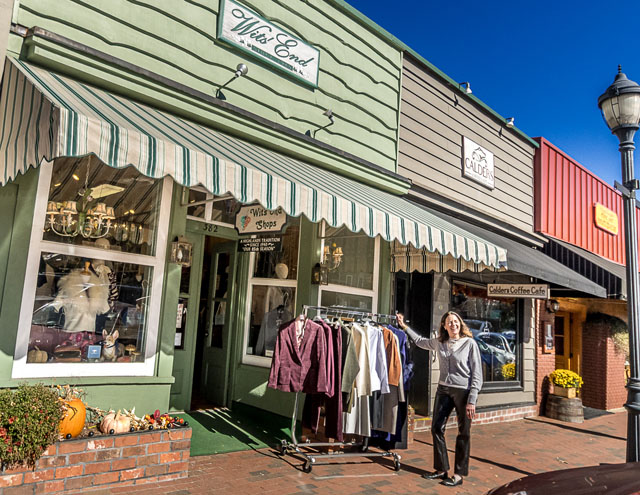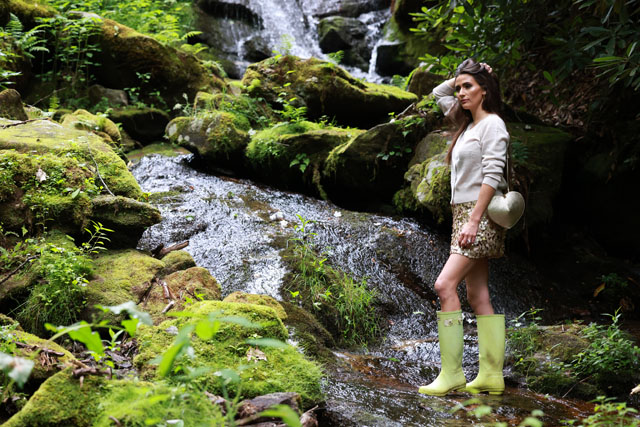Wild for Wool and Mad About Plaid
01 Oct 2025
The original highlands style
October-November 2025
Written By: By Emily Davis | Images: Photo Bob Scott
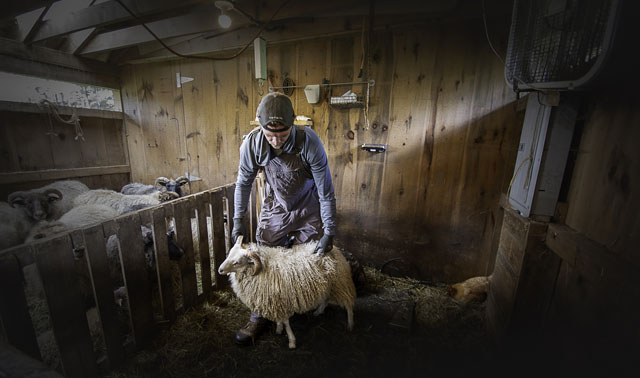
As a chilly autumn mist settles over the Highlands-Cashiers Plateau, the crisp air prompts a wardrobe change — and perhaps refeathering of your nest. It is said that necessity breeds innovation, and that is never more true than when the weather turns cool and damp. A brisk fall day demands cozy layers and sturdy practicality in the Appalachian mountains. This year, I’m looking to the rugged terrain of the Scottish Highlands for style inspiration, because as they say, ye canna change the weather, but ye can change yer breeks.
The Origins of Wool: Nature’s Perfect Fiber
Our lesson on weather-resistant textiles dates back to 10,000 BCE, when early humans discovered that their domesticated sheep not only provided delicious mutton but that their fleece could be turned into warm, wearable wool. Today, over 1,000 breeds of sheep produce a wide variety of fleece used in clothing, home decor, and a plethora of other products. I took a trip out to Winding Stair Farm in Franklin, North Carolina, to get the scoop on their Icelandic sheep.
It was shearing day when I arrived, and the flock was gathered in the barn, each animal patiently awaiting their turn. A skilled sheepshearer can accomplish the task in only about 15 minutes per sheep, but then the arduous task of turning raw fleece into usable fiber begins.
Winding Stair owner Stacy Bredendieck explained that while Icelandic sheep do produce a high-quality fleece, they initially chose the breed for their hardiness and versatility. While many species require open fields of grass for grazing, this primitive Norse breed will contentedly mow through thick brush and clear land like a gasless, environmentally-friendly bushhog. And because the sturdy animals are impervious to cold and wet weather, they don’t require a shelter, making Icelandics a fitting choice for startup farms and highland climes.
This is due to the nature of the Icelandic’s fleece: Fibers closest to the skin, called the thel, keep the animal warm, while the longer outside tog fibers are hygroscopic, meaning they absorb moisture from the air while repelling liquid. Sheep, essentially, are waterproof animals. When woven together, the tog and thel create a sturdy yarn prized for its warmth and durability on dreich days.
The shearing went quickly and without incident, but then the real work began. Each fleece must be measured, cleaned, and graded for quality before it is shipped off to wholesale buyers. It is then carded to align the fibers, dyed if color is desired, spun into yarn, and then woven or knitted into clothing, blankets, carpets, and countless other applications. Wool is even used in ropes due to its ability to repel water, and offcuts are used as mulch and insulation because the fibers self-extinguish in the event of fire.
The process of transforming wool yarn into a single item depends upon whether machinery is used, and can range from a few hours to many days. A single handmade sweater, for example, often requires more than 80 hours of intense handiwork — something to keep in mind when shopping for locally crafted items.
The result is a marvel of both natural and human engineering. Wool is insulating and breathable, helping regulate body temperature in cool or damp conditions. It wicks moisture away from the skin, making it a perfect fit for the adventurous mountaineer. And of course, it is warm. The same properties that keep a sheep perfectly happy and healthy outdoors in frigid northern climates also keep the relatively more fragile human feeling toasty in any weather.
Even better, wool is biodegradable and renewable, making it one of the most sustainable textiles available. Shearing does not harm the sheep at all; in fact, it encourages healthy regrowth and keeps the animal more comfortable in warmer weather. And just as in humans, even a bad haircut eventually grows out, and the fleece can be sheared and used once more.
Weaving Heritage Into Fashion
Wool is used throughout the world, but nobody does it quite like the Scots with their famous tartans. Early archaeological evidence suggests that home weavers began creating tartan-like patterns from wool yarns during the third or fourth century AD. But tartans were not named and assigned to clans until the late eighteenth century, when the first commercial and large-scale producer of tartan cloth, William Wilson & Sons of Bannockburn, began to name the designs.
All tartans are plaid patterns, but not all plaids are tartan! While they look very similar, a tartan features the same lines running both vertically and horizontally, whereas regular plaids can vary in each direction. The confusion originates from the Scottish Gaelic word for blanket, plaide. Because the Scots used to wear their kilts draped over a shoulder, like a blanket, the two patterns became synonymous in our minds.
Regardless, the distinct patterns have become symbols of proud heritage and timeless fashion. The June 2024 Dior show at Drummond Castle thrust plaid back into the limelight, as the Cruise 2025 collection debuted with models parading the historic grounds in a captivating display that was somehow both traditional and punkish. Pop star Taylor Swift fueled the craze by donning one of the creations at the MTV Video Music Awards, and now countless other fashion houses, including Burberry and The Row, have followed suit. Plaid never really goes out of style, but this year it is all the way in.
So as that fog sweeps over the Blue Ridge peaks, filling our mountains and valleys with a wistful evocation of wind-swept moors, perhaps it’s time to roll out some original highlands style. Slip on a wool sweater and wind a plaid scarf ‘round your neck, or coorie up under a wool blanket and hurkle-durkle all day - autumn, with all of its magic and mystery, has arrived.

